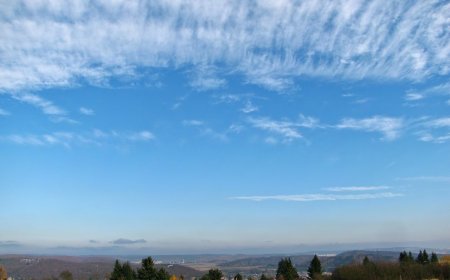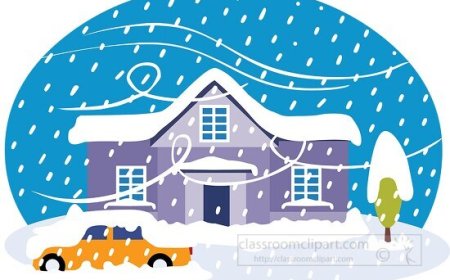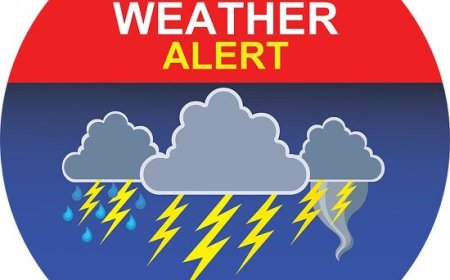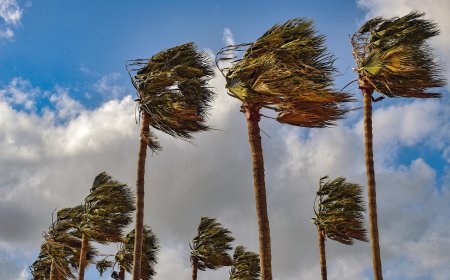Severe Weather for Students | Thunderstorms, Tornadoes, and Hurricanes Explained
Learn about storms and severe weather for kids. Explore different types of extreme weather—from thunderstorms to hurricanes—discover how they form, and find out how to stay safe when nature gets wild.
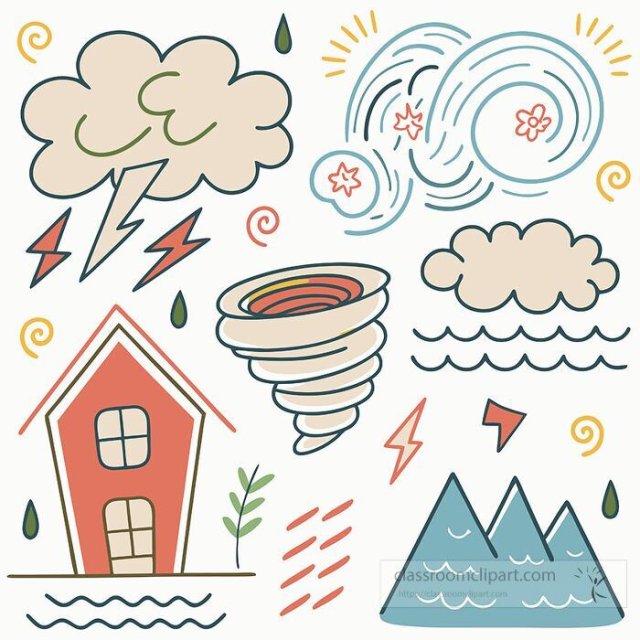
🧭 Introduction
Storms are some of the most powerful and dramatic parts of weather. A sunny day can quickly turn into a stormy sky filled with thunder, lightning, and strong winds. Severe weather includes storms that are dangerous or destructive, like thunderstorms, tornadoes, and hurricanes. These weather events can happen anywhere in the world and often cause floods, power outages, and damage to homes. Understanding how storms form and how to stay safe during them is an important part of learning about weather.
⛈️ Thunderstorms
A thunderstorm is a storm with lightning, thunder, and usually rain. Thunderstorms form when warm, moist air rises quickly into the sky and meets cooler air. As the warm air rises, it cools and condenses into tall cumulonimbus clouds. These clouds can grow very high and produce heavy rain, gusty winds, hail, and sometimes even tornadoes.
Lightning and Thunder
-
Lightning is a huge spark of electricity in the sky.
-
It heats the air around it so quickly that it causes the air to expand and make a loud sound-this is thunder.
-
Since light travels faster than sound, we usually see lightning before we hear thunder.
Fun fact: You can estimate how far away lightning is by counting the seconds between the flash and the thunder. Every 5 seconds equals about 1 mile.
🌪️ Tornadoes
A tornado is a fast-spinning column of air that reaches from a thunderstorm cloud down to the ground. Tornadoes form when warm, moist air meets cool, dry air, creating strong winds that begin to rotate. If the rotation speeds up and stretches downward, it can become a funnel-shaped tornado.
Tornadoes are measured using the Enhanced Fujita (EF) Scale, which goes from EF0 (weak) to EF5 (incredible damage). Most tornadoes only last a few minutes, but powerful ones can destroy entire neighborhoods in seconds.
Tornadoes are most common in the United States, especially in a region known as Tornado Alley-which includes states like Texas, Oklahoma, Kansas, and Nebraska.
🌀 Hurricanes
A hurricane is a massive storm that forms over warm ocean water. It begins as a group of thunderstorms and grows into a swirling system with strong winds and heavy rain. Hurricanes are called cyclones or typhoons in other parts of the world.
To be classified as a hurricane, a storm must have winds of at least 74 miles per hour. Hurricanes are measured on the Saffir-Simpson Scale, which ranges from Category 1 to Category 5. Category 5 storms are the most powerful.
Hurricanes have several key parts:
-
The eye - the calm center of the storm
-
The eyewall - the area around the eye with the strongest winds
-
Rainbands - spiral-shaped bands of clouds and rain
Hurricanes bring storm surges (walls of water pushed onto land), flooding, and destructive winds. They can last for days or even weeks as they move across oceans and land.
🌧️ Other Severe Weather Events
In addition to thunderstorms, tornadoes, and hurricanes, other forms of severe weather include:
-
Blizzards - heavy snowstorms with strong winds and low visibility
-
Ice storms - freezing rain coats trees and power lines in ice
-
Dust storms - strong winds lift sand or dirt into the air
-
Floods - happen when water covers land that is normally dry
-
Heat waves - long periods of extremely hot weather
Each of these events can pose serious risks to people, animals, and the environment.
🧯 Storm Safety Tips
During severe weather, it's important to stay safe. Here are some tips:
-
Thunderstorms: Go indoors. Stay away from windows and don't use electronics during lightning.
-
Tornadoes: Go to a basement or interior room with no windows. Cover your head.
-
Hurricanes: Evacuate if told to. If staying, have supplies and stay inside away from windows.
-
Blizzards and ice storms: Stay inside, keep warm, and avoid driving.
-
Floods: Never walk or drive through flooded areas. Just six inches of water can knock you down.
Listening to weather alerts and emergency instructions helps everyone prepare and stay safe.
📚 Vocabulary Words
| Word | Definition |
|---|---|
| Thunderstorm | A storm with lightning, thunder, and rain |
| Lightning | A flash of electricity in the sky |
| Tornado | A spinning column of air touching the ground |
| Hurricane | A huge storm with strong winds forming over oceans |
| Storm surge | A rise of seawater pushed onto land by hurricane winds |
💡 Interesting Facts About Storms
-
Lightning can be hotter than the surface of the Sun-up to 50,000°F!
-
The U.S. has over 1,000 tornadoes each year-more than any other country.
-
The eye of a hurricane can be 20-40 miles wide, but the storm itself can stretch over 400 miles.
-
A hurricane can release more energy than 10,000 nuclear bombs during its lifetime.
-
Tornado winds can reach speeds of over 300 mph!
👧 Kid-Friendly Summary
Storms like thunderstorms, tornadoes, and hurricanes are exciting but can be dangerous. Thunderstorms bring lightning and thunder. Tornadoes spin really fast and can damage buildings. Hurricanes are giant storms from the ocean. By learning about storms and how to stay safe, we can protect ourselves when bad weather happens.
✅ Interactive Quiz
Q1: What is lightning?
A. Frozen rain
B. A bright flash of electricity in the sky
C. A loud sound
D. Spinning air
Q2: What is the calm center of a hurricane called?
A. The wall
B. The eye
C. The spiral
D. The core
Q3: Which storm has strong winds and forms over warm oceans?
A. Tornado
B. Blizzard
C. Hurricane
D. Dust storm
Q4: What should you do during a tornado?
A. Go outside
B. Get in a car
C. Go to a basement or small interior room
D. Use a metal umbrella
Q5: What scale is used to measure tornado strength?
A. Richter Scale
B. Fahrenheit Scale
C. Fujita Scale
D. Wind Speed Meter
Scoring:
5/5 = ⚡ Storm Scientist
3–4 = 🌪️ Weather Watcher
1–2 = 📘 Safety Starter



















































